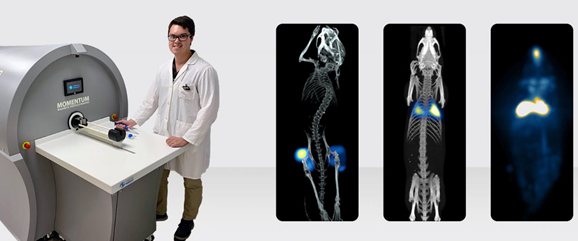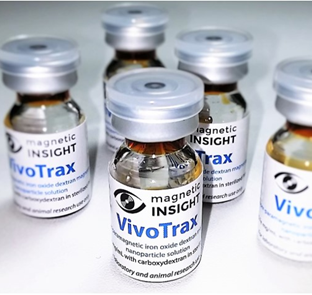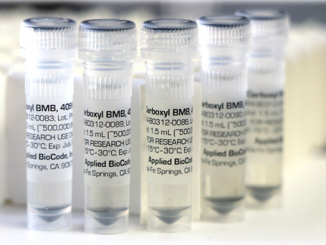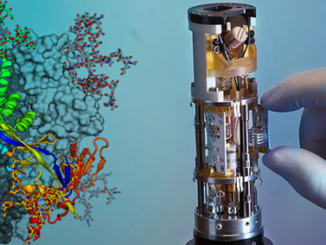
Aided by support from the National Institute of Biomedical Imaging & Bioengineering, Magnetic Insight continues to advance the development of its magnetic particle imaging platform designed to bring new levels of capability to biomedical imaging, considered indispensable for diagnosing high-mortality diseases such as cancer, cardiovascular disease and stroke.
Now with a pre-clinical imager that is commercially available, the company aims at scaling up to a human neurovascular imager using its innovative technology. In 2020, it received two awards totaling $1.5 million from the institute, an agency of the U.S. National Institute of Health, and since 2015 has received about $5.2 million in grants from the agency for various research projects.
The company’s flagship technology is magnetic particle imaging (MPI), a method for high-contrast imaging of magnetic iron-oxide nanoparticles with no depth attenuation and with incredible sensitivity and specificity. A relatively recent addition to the field of molecular imaging, key applications for it are in cancer immunology, functionalized nanoparticle imaging, vascular disease, and diabetes. The core technology is also growing into new applications such as multiplexed imaging, localized therapeutic hyperthermia, and targeted drug delivery.
Unrelated to magnetic resonance imaging, MPI quantitatively detects magnetic nanoparticles anywhere in the body with exceptional sensitivity. With its unique technical capabilities, MPI enables novel applications such as the systemic tracking of therapeutic cells during therapy, inflammation, and vascular function. It can also leverage nanoparticles to both image functional events and administer localized hyperthermic treatments for tumor ablation and heat-sensitive drug delivery.
An integrated platform of products for MPI
Magnetic Insight offers an integrated platform for MPI including scanners, localized hyperthermia systems, and reagents as complete solutions for preclinical model development and to accelerate cellular therapeutics development. Shown at top is the company’s Momentum imager and examples of the precision scans it can produce. It is a fully integrated and self-shielded pre-clinical MPI solution. It uses a high-field gradient main magnet geometry and a proprietary reconstruction process to produce the world’s highest sensitivity and resolution MPI images, the company says.

Reagents include VivoTrax particles for use in research MRI and MPI to track cells non-invasively in vivo or vascular imaging. It is a simple to use nanoparticle for loading into cells for cell tracking experiments and as a blood pool agent. The dextran magnetite solution is well characterized and has been widely used with magnetic resonance and magnetic particle imaging.
Recent studies include developing first human MPI imager
One of the grants in 2020, for $809,897, seeks to develop color imagery into the company’s commercial pre-clinical imager and enable scientists and clinicians to unmix particles in bound and unbound states.
For example, as explained in the study proposal, a scientist could discover an antibody that binds specifically to sites of vascular inflammation and create a targeting agent. This antibody can be attached to a reporter, a superparamagnetic iron oxide particle, and the combined tracer can highlight atherosclerotic plaques. A stubborn challenge that reduces the sensitivity and specificity of these methods is that unbound reporters greatly outnumber bound reporters, often by 100-fold, effectively obscuring the pathophysiology. It would be a major advance in medical molecular imaging if bound and unbound reporters could be separated in the image, as contrast would improve dramatically. The unique physics of MPI allows one to distinguish bound from unbound magnetic nanoparticles, although this technology is still in its infancy and requires improvements to its robustness for successful commercialization.
Recent grants include several awards for applying its technology to neurovascular imaging. Two awards totaling $758,965 were issued in 2020, on top of $1,066,136 in 2019. In the 2020 program, the company plans to build the first human MPI imager. It will build the main magnet, characterize its magnetic performance, integrate all necessary support systems such as shielding, RF transmit and receive and magnet control systems, characterize the imager with phantoms, and finally evaluate with animal cadavers.
For more info, see www.magneticinsight.com



